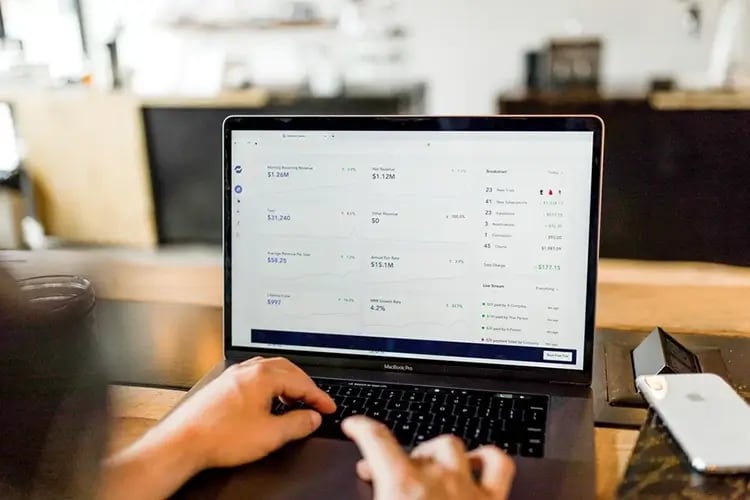
No-Line Commerce
Table of contents:
What is no-line commerce?
No-line commerce, sometimes called seamless commerce, refers to a new generation of e-commerce in which customers have a seamless, unified shopping experience that links both online and offline retail strategies. The term "no-line" is derived from the idea of erasing the lines between digital and physical retail spaces. In no-line commerce, the emphasis is on providing consumers with the ability to make a purchase and an integrated experience that spans across various platforms, irrespective of the location they choose to interact with.
No-line commerce vs. omnichannel: What’s the difference?
These two terms are not really separate, but rather levels of the same goal: No-line commerce is the ultimate form of omnichannel sales, where the customer experiences a fluid, seamless journey, no matter the channels they come into contact with.
One great explanation of how terms like multi-channel, cross-channel, omnichannel and no-line commerce relate to each other can be seen in an interview with Matthias Schulte, CEO of Tradebyte Software GmbH, hosted by ISPO (Internationale Fachmesse für Sportartikel und Sportmode):
“You can put the terms in almost chronological order that way, and two market developments can be determined above all: Firstly, the erroneous belief in cannibalization (i.e. that online customers take sales away from offline customers) is decreasing left and right.
That no longer exists with no-line commerce; in the foreground is the consumer who wants to be reached independently of channels or other corporate perspectives. Secondly, the IT complexity and networking of the system and process environments are increasing. The first approaches in e-commerce were ‘We have a web shop too,’ and at that time separate islands were created for online IT and its processes.
No-line commerce requires networked system environments, for example to facilitate the return of an online-bought item offline as well, which of course increases both – the attractiveness but also the complexity, unfortunately.”
Benefits of no-line commerce
Businesses who are able to pull off a no-line commerce strategy can achieve a number of benefits:
-
True channel integration: No-line commerce bridges the gap between in-store and online shopping, offering customers a consistent experience across all touchpoints. Whether they interact with your brand through a website, mobile app, social media or in-person, they receive the same personalised service and access to products and promotions.
-
Enhanced customer experience: This makes it possible to deliver a more personalised and relevant shopping experience. Advanced data analytics and AI-driven insights enable retailers to understand customer preferences better, making it easier to recommend products and tailor promotions that resonate with individual shoppers.
-
Convenience and flexibility: No-line commerce empowers customers to browse products online or offline, make purchases wherever they want and have the option to either pick up items in-store or have them delivered to their doorstep. Every channel is truly integrated, meaning the customer can do their shopping in the most convenient way for them. This flexibility accommodates various customer preferences and schedules, making the shopping experience more malleable.
-
Reduced friction in purchase process: Customers can seamlessly transition from browsing to purchasing without worrying about which platform they started on. Companies make the shopping process as smooth as possible, reducing checkout friction and ultimately leading to higher conversion rates and increased customer satisfaction.
-
Data-driven insights: No-line commerce generates a wealth of data from various interactions, enabling businesses to gain valuable insights into customer behaviour and preferences. This enables better decision-making and more targeted marketing efforts across all channels.
Challenges when attempting no-line commerce
Of course, even though achieving these benefits sounds great, there’s no doubt that actually implementing no-line commerce is a tall order. Omnichannel strategies have been challenging e-commerce businesses since the beginning, and reaching the next level of true no-line commerce isn’t easy, either.
Key challenges to be addressed include real-time inventory management, data privacy, brand and marketing consistency, customer experience, pricing, payments, logistics, shipping and more.
So, is no-line commerce possible to achieve? Yes, but it’s tough. E-commerce businesses must coordinate their digital channels and platforms, ensuring that inventory, pricing and marketing messages are consistent, plus offering a seamless payment and delivery experience regardless of the channel. Achieving no-line commerce requires retailers to invest in the right technology, infrastructure and staff and to continuously adapt to changes in the e-commerce landscape.
Examples of companies who are succeeding with no-line commerce
Because this no-line commerce is the highest level of online and offline retail integration, there aren’t many perfect examples. However, the three companies below are known in the industry for their impressive efforts to create a true no-line commerce experience for customers:
Because this no-line commerce is the highest level of online and offline retail integration, there aren’t many perfect examples. However, the three companies below are known in the industry for their impressive efforts to create a true no-line commerce experience for customers:
Sephora
Beauty retailer Sephora offers a seamless shopping experience accessible through multiple online and offline channels. In stores, shoppers can use iPads and other devices to “try on” different makeup shades or order products to be shipped to their homes. Location-based marketing is used to send relevant information and deals to customers through their app when they enter the store.
Image Source: Tech Republic
Through the online channels, shoppers can still get the benefits of in-store shopping. The app is a destination all its own for beauty fans to interact with the brand and the products, and the Sephora loyalty program is one of the best reward experiences in the business.
Nike
Another no-line commerce winner is Nike, which launched its mobile app allowing users to scan their feet to find the perfect fit for their shoes. Customers can also use the app to customise shoes, browse in-store inventory and shop online, creating a seamless blend between the online and offline experience.
Walmart
US-based brick-and-mortar retail giant Walmart has invested heavily in no-line commerce to compete with Amazon, launching a digital wallet for easy in-store payments, Scan & Go checkout options, an app with personalised content, buy online and pick up in store options and express same day delivery.
Achieving no-line commerce in the current landscape
Businesses aiming to have a true no-line commerce operation will have to work hard to define the right e-commerce strategies, from the website and use of technology to proper inventory management and logistics planning.
For D2C, retailers and brands, Omnia Retail has solutions available to simplify Dynamic Pricing and get you one step closer to no-line commerce. Learn more about our all-in-one pricing platform here.
Talk to one of our pricing
experts today.


